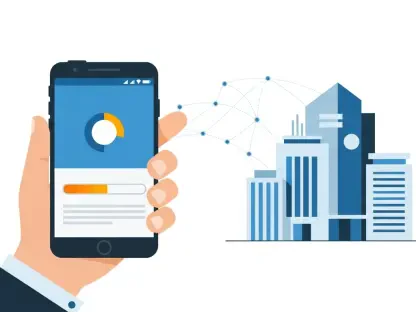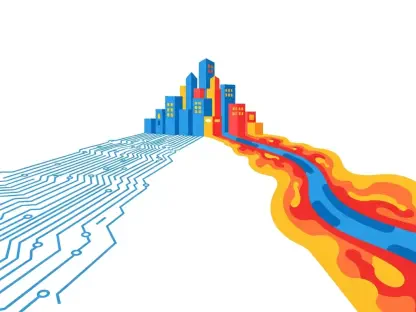In recent years, the world of finance has been stirred up by the advent of blockchain technology.
One of the most groundbreaking developments in this space, Decentralized Finance (DeFi), is revolutionizing the way financial services are accessed and governed around the globe.
The importance of this new sector cannot be understated. In 2021, Deutsche Bank CEO Paul Maley said that banks must prepare to “interact and interoperate with DeFi systems as they emerge” if they wish to remain relevant.
But what is DeFi, exactly? What are its benefits compared to traditional institutions? And what are the major challenges to its success?
In this article, we’ll answer these and other critical questions, outlining how the future of financial services might unfold.
A Brief Overview
As the name suggests, DeFi refers to a decentralized ecosystem of financial applications that are built on blockchain networks.
Unlike traditional finance (TradFi), which relies on institutional intermediaries such as banks or brokers, DeFi operates in a way that does not require trusted third-parties to guarantee the validity of operations.
Instead, services like peer-to-peer (P2P) transactions, lending, borrowing, and trading are facilitated by smart contracts—self-executing code with encrypted terms of the agreement that cannot be maliciously altered.
Because of this automated quality, DeFi services can be accessed 24/7 from anywhere in the world. All that is needed are two peers and a smart contract defining their financial relationship.
In this context, Decentralized Exchanges (DEXs) are the quintessential space of the DeFi world, where users can trade digital assets directly with one another without requiring a central authority.
By providing liquidity, these platforms enable users to swap assets like stablecoins—digital currencies designed to maintain a stable value by pegging their price to an underlying asset or algorithm—or other tokens that are used to interact with blockchains or Decentralized Applications (DApps). Stablecoins, in particular, play a crucial role in facilitating DeFi transactions, as they offer stability amidst the volatility of cryptocurrencies.
Last but not least, DeFi lending and borrowing protocols allow users to lend their digital assets and earn interest or borrow assets by collateralizing their holdings. Once again, as these platforms function autonomously through smart contracts, they can ensure seamless financial operations without requiring traditional institutions.
Why DeFi? What is wrong with traditional finance?
As explained, blockchain technology allows DeFi to be a peer-to-peer financial system that is accessible to everyone at any time, anywhere in the world.
One of its distinctive features is that identity verification or KYC are not required. While this focus on privacy is sometimes criticized as a gift to cybercriminals, it can also be a powerful tool for many citizens around the world seeking to avoid censorship and prosecution.
On the other hand, TradFi is only accessible from 09:00 AM to 05:00 PM, Monday through Friday, not to mention on bank holidays. Moreover, its need for institutional intermediaries makes it expensive, restricted, and slow.
Normally, when an individual or a business applies for a loan, they must meet stringent requirements to be eligible—for instance, their residence, nationality, or credit history must be provided.
In the world of DeFi, instead, there is no towering institution emanating rules from above. The system is supported by a member-user consensus where good behavior is incentivized, and bad actors are punished.
A notable effect of this structure is that interest rates on these loans are generally lower, as no third party is owed fees for facilitating the transaction. Furthermore, the absence of intermediaries means that settlement processes can be significantly faster (sometimes even instantaneous) as no agent or institution is required to approve transactions.
All the magic is worked by the usual suspect. Smart contracts.
Decentralized Finance: Friend or Foe?
So far, some key differences between the TradFi and DeFi systems have been examined. However, that’s still an incomplete picture.
In this section, you’ll discover three ways Decentralized Finance is uniquely innovative and three concerns that will need to be addressed before it reaches mass adoption.
Benefits
- DeFi is positioned to democratize access to financial services by providing virtually any internet user with a wide range of banking products and alternatives. This feature is particularly important for individuals living in underserved regions who may not be eligible for traditional financial infrastructure.
- Blockchain technology was built to ensure transparency and immutability, thus reducing the risk of fraud, market manipulation, and censorship. In addition, DeFi platforms operate in a decentralized way, eliminating single points of failure and minimizing counterparty risk.
- Due to DeFi’s permissionless nature, developers can build and deploy financial applications without requiring approval from centralized authorities. This freedom leaves space for creativity and experimentation, allowing for fast and bold innovation within the ecosystem.
Challenges
- While security can be considered one of DeFi’s strong suits, some blockchains in the past have experienced sporadic smart contract vulnerabilities that led to hacks and exploits. Security audits, rigorous testing, and ongoing monitoring will be essential to mitigate these risks and safeguard users’ funds.
- The regulatory landscape surrounding DeFi is in continuous evolution, with regulators still grappling to understand and adapt to the decentralized nature of the ecosystem. Regulatory clarity will be crucial to attract sizable investments from traditional institutions and make decentralized finance a mass phenomenon.
- Scalability remains a significant challenge, as the current infrastructure of DeFi networks may struggle to handle the increasing demand and transaction volume. Interoperability solutions will be needed to facilitate seamless communication and collaboration between different platforms and blockchains.
The Future of Finance
In conclusion, Decentralized Finance aspires to be a groundbreaking upgrade of traditional financial services, charming its users with unprecedented accessibility, transparency, and innovation.
While DeFi is still in its nascent stages, its rapid growth and adoption signal a promising future for the world of finance—a future where users and convenience are at the forefront, not monolithic institutions.
As this decentralized ecosystem continues to mature, addressing key challenges and doubling down on innovation will be crucial to unlocking the true potential of DeFi.
The future of finance is at stake. (Pun intended.)









